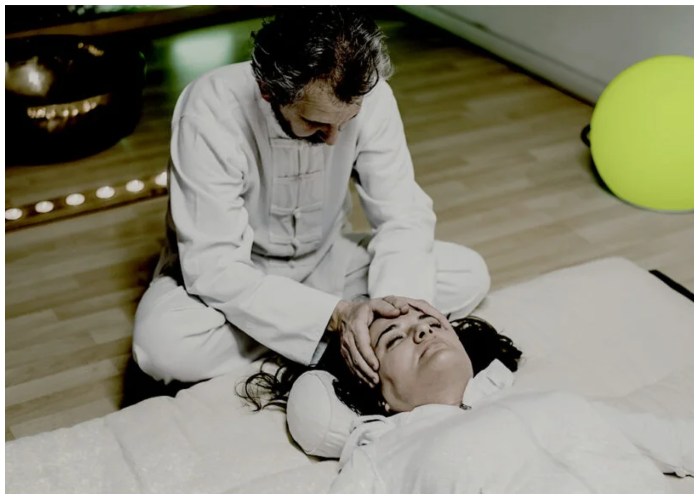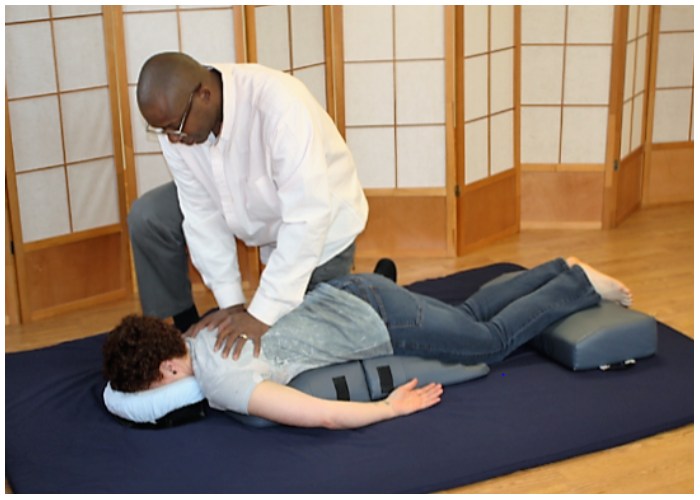Shiatsu Massage is a therapeutic bodywork practice that originated in Japan, blending traditional Chinese medicine with contemporary physiological theories. This massage technique uses fingers, thumbs, elbows, and palms to apply pressure to different areas of the body, promoting the body’s natural healing processes. By following the principles of Qi (energy) and meridian flow, Shiatsu works to balance and harmonize the body’s energy pathways. This method can have both preventive and remedial effects and is often used in conjunction with other therapies like acupuncture, dietician work, and herbal remedies. Let’s explore how Shiatsu Massage works, its techniques, benefits, and what you can expect from a session.

How Does Shiatsu Massage Work?
The underlying theory of Shiatsu Massage is that physical health is interconnected with mental and emotional well-being. Poor physical health can negatively impact one’s mental and emotional state, creating a cycle of imbalance. Shiatsu therapists apply pressure to acupressure points to enhance energy flow and correct imbalances within the body. This pressure helps release toxins, relieve tension, and realign problematic areas. By focusing on the flow of Qi through meridian channels, Shiatsu helps to heal the body holistically. This integrated approach ensures that all aspects of health—mental, emotional, and physical—are addressed.
Shiatsu Massage Techniques
Shiatsu Massage has evolved since its inception, with various styles incorporating meditation, dietary guidance, water Shiatsu, acupuncture, and breathing techniques. Common techniques used in Shiatsu include: Applying pressure along or against muscles helps release toxins and identify problem areas. In Shiatsu, this pressure also removes blockages along the meridians, allowing Qi to flow properly, benefiting the entire body. Another technique involves kneading, where thumbs, fingers, and heels of the palms knead muscles slowly, similar to kneading bread. Kneading helps relieve muscle tension, making them more pliable, and breaks down knots and scar tissue. Tapping, another technique, involves quick finger tapping to stimulate muscles, especially in tender areas like the face. For larger areas, such as the back or glutes, tapping with fists can engage sluggish muscles and improve nerve function, helping to identify and awaken dormant muscles.

Benefits of Shiatsu Massage
Shiatsu Massage offers numerous benefits, making it a worthwhile endeavor for cat owners. Firstly, it provides much-needed exercise for your cat, which is particularly important as they age. While kittens are naturally active, older cats tend to slow down. Regular walks can help maintain their physical health by encouraging muscle activity and reducing the risk of obesity. Moreover, leash training stimulates a cat’s mental health. Cats are inherently curious creatures, and the opportunity to explore new environments keeps their minds sharp. Being outside exposes them to various stimuli, from different scents to sights and sounds, which can alleviate boredom and promote mental well-being. Additionally, leash training can strengthen the bond between you and your cat, offering a shared activity that both can enjoy.
Conditions Treated by Shiatsu Massage
Shiatsu Massage is used to treat a range of ailments, including headaches, migraines, menstrual pain, digestive issues, insomnia, fatigue, stress, anxiety, chronic pain such as lower back, neck, and joint pain, arthritis, post-traumatic stress disorder (PTSD), and sports injuries like strains and sprains. The therapeutic approach of Shiatsu, which balances physical and emotional health, makes it effective in addressing these varied conditions by targeting their root causes and promoting overall well-being.
What Does Shiatsu Massage Feel Like?
Shiatsu Massage involves applying varying levels of pressure, which can cause different levels of discomfort. First-time recipients might find this discomfort confronting. However, Shiatsu uses a nurturing touch, so any pain should feel like the tension is being released. Unlike other massage techniques, Shiatsu does not use oil and is performed through the patient’s clothing, which can cause extra stimulation or tingling. After a session, patients typically feel more relaxed and energized. Emotional releases may also occur during the session as Shiatsu addresses mental and emotional states alongside physical health. Focusing on breathing patterns can help manage any overwhelming feelings during the massage.

Choosing a Shiatsu Massage Therapist
Selecting the right Shiatsu Massage therapist is crucial for a positive experience. Ensure the therapist is qualified and nationally accredited, and verify that they stay current with the latest techniques and research. The therapist’s expertise should align with your specific condition, and their treatment room should be clean and professionally presented. Before starting treatment, consider asking about their registration with professional associations, the level of their training, and the duration of their studies. In Australia, for example, therapists need a minimum Diploma qualification with clinical and practical training components.
What to Expect from Your First Shiatsu Massage Appointment
Knowing what to expect can help ease any anxiety about your first Shiatsu Massage session. Wear loose, light clothing as the massage is performed through clothes. Expect a 5-10 minute consultation where the therapist will inquire about your medical history, stress levels, energy, sleep patterns, and specific areas of concern. During the massage, varying levels of pressure may cause discomfort, especially if your Qi is blocked and your body tense. Post-session, drink plenty of water and avoid alcohol and cigarettes to flush out toxins released during the massage. Soreness, stiffness, and headaches may occur due to increased blood circulation and inflammation but should subside after a few days.